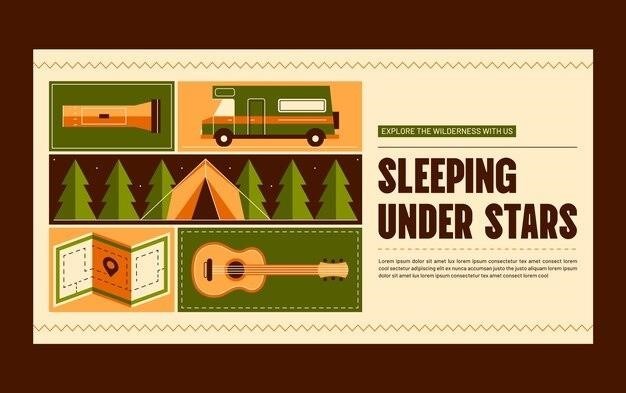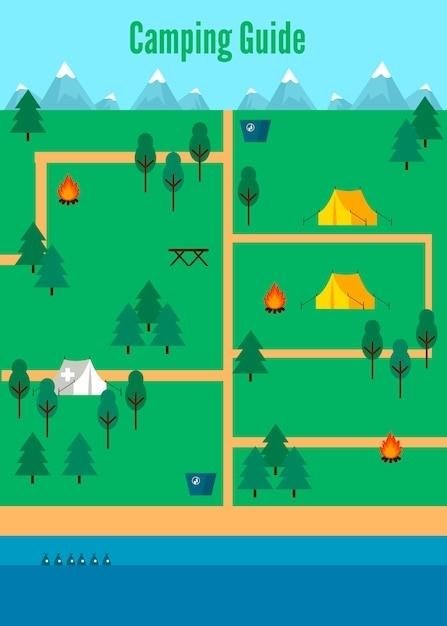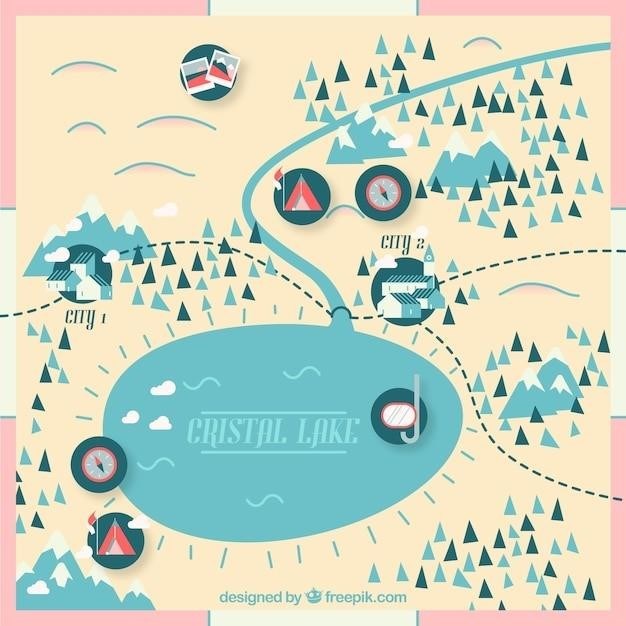Red River Gorge Map PDF⁚ A Comprehensive Guide
Explore the Red River Gorge with detailed PDF maps․ Find printable maps for hiking‚ official Forest Service maps‚ free downloadable options showcasing trails and points of interest‚ and high-quality laminated maps for durability․ Discover diverse resources for planning your adventure․
Finding Reliable Red River Gorge Maps in PDF Format
Securing dependable Red River Gorge maps in PDF format requires a strategic approach․ Several avenues exist‚ each offering unique advantages․ The official website for the Daniel Boone National Forest‚ encompassing the Gorge‚ may offer downloadable maps․ Check for trail maps‚ often featuring key points of interest and difficulty levels․ Look for options specifically designed for hiking‚ rock climbing‚ or other activities․ Remember to verify the map’s currency‚ as trails can change․ Local guidebooks‚ often available for purchase online or in local stores‚ frequently include detailed Red River Gorge maps‚ sometimes as fold-out inserts․ These offer a combination of maps and trail descriptions․ Always cross-reference information from multiple sources to ensure accuracy and completeness before embarking on your adventure․ Websites dedicated to outdoor recreation may host user-submitted maps or links to official resources․ Exercise caution when using user-generated content‚ verifying information with reliable sources whenever possible․
Printable Maps for Hiking Adventures
Printable maps are invaluable for Red River Gorge hiking․ PDFs offer convenience and flexibility․ Downloadable maps from official sources like the Forest Service website ensure accuracy and up-to-date trail information․ These often include trail lengths‚ difficulty ratings‚ and points of interest․ Before your hike‚ print the map at a suitable scale for easy readability in the field․ Consider printing multiple copies; one for each hiker in your group‚ ensuring everyone has access to the trail details․ Laminating your printed map adds significant durability‚ protecting it from rain and wear․ A laminated map will hold up better throughout your hike‚ making it a worthwhile investment for longer or more challenging trails․ Alternatively‚ you can use a waterproof map case․ For those preferring a paperless approach‚ consider using a smartphone or tablet with a downloaded map‚ but be sure to have a backup plan in case of battery failure․ Remember to always check weather conditions before heading out and pack accordingly․
Official Forest Service Maps and Their Accessibility
The Daniel Boone National Forest‚ encompassing the Red River Gorge‚ provides official maps crucial for safe and enjoyable exploration․ These maps‚ often available as PDFs‚ are a reliable source for trail information‚ highlighting designated routes‚ campsites‚ and points of interest within the gorge․ Accessing these resources may involve visiting the official Forest Service website or contacting local ranger stations․ Look for sections dedicated to recreation maps or downloadable resources․ The maps usually depict trail junctions‚ elevation changes‚ and proximity to water sources‚ essential for planning and navigating the trails effectively․ Ensure you download the most recent version of the map to avoid outdated information that could lead to navigational issues․ Remember that cell service can be unreliable in the gorge‚ making these offline maps essential․ While many sources provide maps‚ the official Forest Service maps are usually considered the most accurate and up-to-date․ Always be prepared for unexpected changes in trail conditions․
Free Downloadable Maps Featuring Trails and Points of Interest
Several websites and organizations offer free downloadable maps of the Red River Gorge‚ enhancing accessibility for outdoor enthusiasts․ These digital resources often provide detailed trail networks‚ showcasing various difficulty levels and lengths․ Points of interest‚ such as scenic overlooks‚ natural arches‚ and historical sites‚ are typically marked‚ enriching the hiking experience․ Many free maps include additional information beyond simple trail layouts․ Some may incorporate elevation profiles‚ helping hikers gauge the physical demands of a particular route․ Others might include details on camping areas‚ parking locations‚ and emergency contact information․ While free‚ ensure the map’s source is reputable to avoid inaccuracies․ Always cross-reference with official maps for crucial navigation elements․ Many free maps are easily accessible via a simple web search‚ but remember to verify the date of the last update to ensure the information is current and reflects any trail changes or closures․
High-Quality Laminated Maps for Durability
For hikers prioritizing durability and weather resistance‚ high-quality laminated maps are a worthwhile investment․ Unlike standard paper maps prone to tearing or water damage‚ laminated versions offer superior protection against the elements․ The lamination process seals the map‚ preventing moisture from seeping in and causing the ink to run․ This is particularly crucial in the Red River Gorge‚ where unpredictable weather is common․ Furthermore‚ the lamination provides increased resistance to tearing and creasing‚ ensuring the map remains usable even with repeated folding and unfolding․ The added durability allows for multiple trips and extended use without significant wear and tear․ While laminated maps may cost more upfront‚ their longevity makes them a cost-effective choice in the long run․ Look for maps explicitly designed for outdoor use‚ often featuring a thicker‚ more resilient lamination․ The investment in a durable‚ laminated map ensures a reliable navigational tool throughout your Red River Gorge adventures․
Guidebooks and Their Inclusion of Red River Gorge Maps
Many guidebooks dedicated to the Red River Gorge include detailed maps as a key component of their content․ These aren’t just simple trail maps; they often incorporate topographic information‚ points of interest‚ and even geological features‚ providing a more comprehensive understanding of the area․ Some guidebooks focus specifically on hiking trails‚ providing detailed trail descriptions alongside their corresponding maps‚ making navigation straightforward and minimizing the risk of getting lost․ Others may concentrate on climbing routes‚ offering maps that showcase cliff faces‚ routes‚ and difficulty ratings․ The inclusion of maps within guidebooks offers a valuable combination of textual information and visual aids‚ allowing users to plan their trips efficiently and effectively․ When choosing a guidebook‚ check for high-quality maps that are easy to read and understand‚ with clear labeling and a user-friendly design․ Look for books that offer a balance of textual information and clear‚ detailed maps for a well-rounded exploration of the Red River Gorge․
Accessing Maps Through Local Guidebook Retailers
Local guidebook retailers in the Red River Gorge area and surrounding towns offer a convenient way to acquire physical maps and guidebooks containing Red River Gorge maps․ These shops often stock a range of publications‚ from comprehensive guidebooks with detailed trail maps to smaller‚ more focused maps highlighting specific areas or activities within the gorge․ Visiting these retailers allows for direct interaction with knowledgeable staff who can provide personalized recommendations based on your interests and skill level․ They can point you toward maps best suited to your planned activities‚ whether it’s hiking‚ climbing‚ or exploring other aspects of the gorge․ Additionally‚ purchasing maps locally supports small businesses within the community and contributes to the economic vitality of the region․ Beyond maps‚ these retailers may also offer other useful items‚ such as hiking gear‚ souvenirs‚ and information on local services and accommodation‚ enhancing your overall experience in the area․ Check online reviews or inquire locally about which shops carry the most comprehensive selections of Red River Gorge maps․
GPS Trail Maps for Official and Unofficial Trails
While many Red River Gorge trails are well-marked‚ utilizing GPS trail maps offers significant advantages‚ especially for navigating less-traveled or unofficial paths․ Dedicated hiking and outdoor navigation apps often provide downloadable maps with GPS functionality‚ allowing you to track your progress in real-time‚ even offline; These digital maps can pinpoint your location‚ display your route‚ and offer crucial information like elevation changes and points of interest․ For official trails‚ GPS maps help confirm your position and ensure you stay on course‚ especially in areas with poor signage or challenging terrain․ For unofficial or less-maintained trails‚ a GPS map becomes an invaluable tool‚ mitigating the risk of getting lost․ Remember that relying solely on a GPS device should be avoided; always carry a physical map and compass as backups․ Some apps allow you to download maps for offline use‚ a critical feature for areas with limited or no cell service․ Ensure your device is fully charged before embarking on any hike‚ and familiarize yourself with the app’s features before you begin your adventure in the gorge․
Geological Maps and Their Availability
Understanding the geological formations of the Red River Gorge enhances the hiking experience․ Geological maps illustrate the area’s unique sandstone arches‚ cliffs‚ and rock formations‚ providing insights into their origins and composition․ While detailed geological survey maps might not be readily available as free downloadable PDFs‚ several resources can offer relevant information․ Some guidebooks include simplified geological maps or sections describing the area’s geological history․ Searching online for “Red River Gorge geology” can lead to academic papers‚ articles‚ or websites with relevant information‚ potentially including smaller-scale geological maps․ These resources may not always provide highly detailed‚ large-scale printable maps‚ but they can still offer valuable context for your explorations․ Furthermore‚ contacting the local geological survey or university departments specializing in the region’s geology could provide information on the availability of more detailed maps or publications․ Remember that understanding the geology can enhance appreciation for the unique landscape and its formation over millions of years․
Utilizing Online Resources for Red River Gorge Trail Maps
The internet offers a wealth of resources for accessing Red River Gorge trail maps․ Websites dedicated to hiking and outdoor recreation often feature user-submitted trail maps‚ photos‚ and reviews․ These crowdsourced maps can be invaluable‚ offering perspectives on trail conditions and highlighting less-traveled paths․ However‚ it’s crucial to verify the accuracy and currency of such maps‚ as conditions can change․ Official park websites and the websites of relevant organizations like the Forest Service often provide downloadable trail maps in PDF format․ These maps are typically reliable‚ though they may not always include the most up-to-date trail information‚ especially regarding unofficial or less-maintained trails․ Interactive online mapping tools like Google Maps or AllTrails can also be helpful․ These platforms often incorporate user-generated content‚ including trail details‚ photos‚ and reviews‚ providing a comprehensive picture of the trails․ Always cross-reference information from multiple sources to ensure accuracy and plan your hike accordingly․ Remember to check for updates and alerts before embarking on your adventure․


